Giles Bailey
About
Working largely with performance, Giles Bailey uses texts, video fragments and choreographies (either composed or strategically plundered) to rethink conventional approaches to the assemblage and recounting of history.
Proposing a historic model that acknowledges doubt, subjectivity and reduction, Bailey remains skeptical of ‘authentic accounts’ and looks instead to the fractured, incomplete, multilayered and apparently democratic nature of contemporary mediations of information (e.g. web browsers) as a tool to structure and inform the composition of his works.
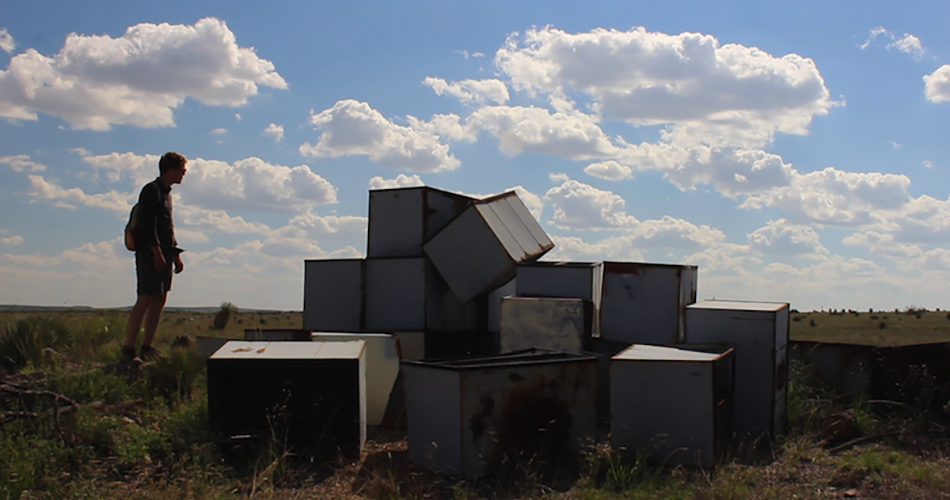
Talker Catalogue
This ongoing research project initiated in 2010, aims to propose an alternative negotiation of performance practice’s history.
Through various iterations in print, exhibition and live performance the project challenges historiographic models that are traditionally linear, sequential and reductive. It uses performance itself to become an active participant in these histories rather than a dispassionate authority commenting on it from the outside viewing history as an expansive, tangential network of information that must be constantly negotiated and reappraised. The work is split into four constituent performances:
Exit THE AZTEC
In this re-staging, a minor character in François Truffaut’s 1962 film Jules et Jim, who appears on screen for less than a minute and barely speaks yet is mysteriously dubbed THE AZTEC in the director’s screenplay, steps from the movie to become a site inhabited by a number of characters and voices and the nexus of various narrative threads. Using this small, enigmatic detail from the screenplay as a device to re-organise the content of the film and introduce other elements, Bailey poses questions concerning disposable and significant details.
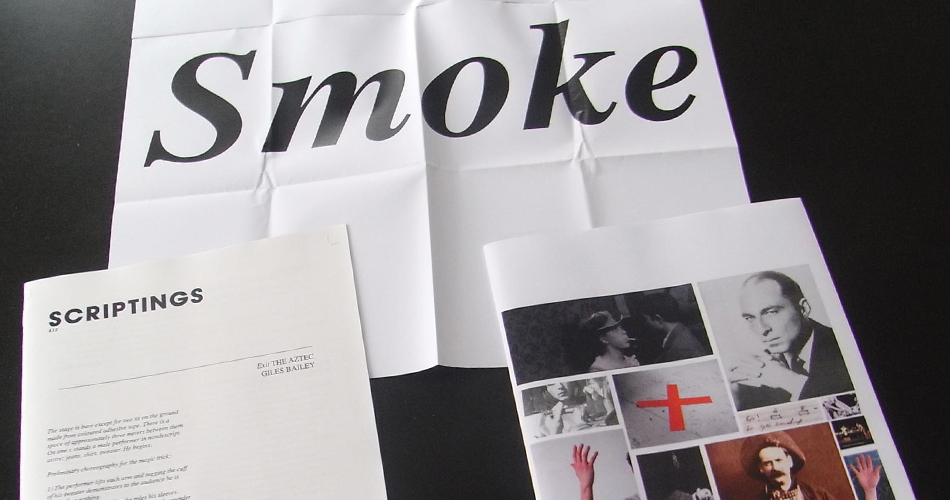
Scriptings #16 Exit THE AZTEC (2010)
Tom/Lutz: Two Scenes in 1983
In this layered work, the mode of observation shifts between story, lecture, demonstration and dance, problematizing the register at which the performance is received. Making use of, though not explicitly citing, source material including the death of American playwright Tennessee Williams, Chantal Akerman’s film Un jour Pina à demandé (1983) and Pina Bausch’s Nelken (1982), the work sets Tennessee Williams as a counterpoint to Pina Bausch to speak about an epoch, while constructing a narrative that leaves the relationship between the two male protagonists ambiguous but entangled.
Re-staging content from one scenario/paradigm in another, Bailey makes the threshold between the sources porous: changing, re-evaluating and playing with them simply by placing them alongside each other.
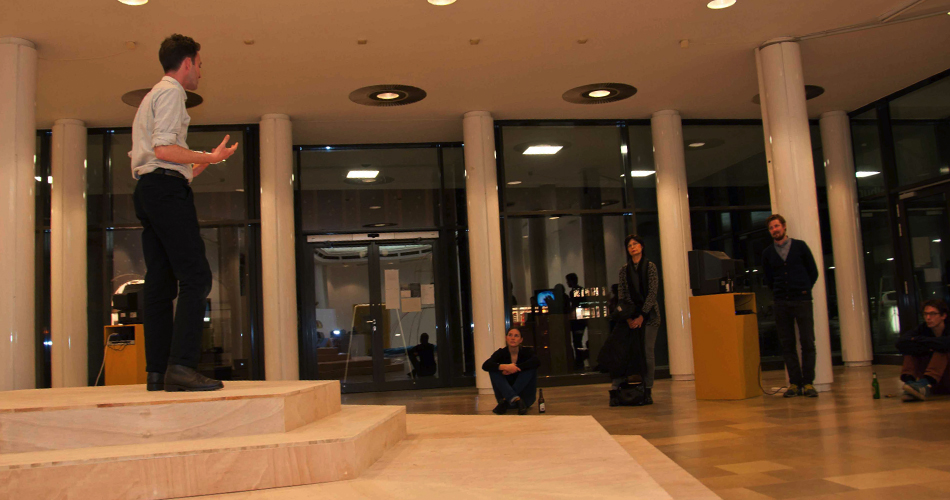
Tom/Lutz: Two Scenes in 1983 (2011) performed for the finisage of ‘Time to Recolect’ at Stadthausgalerie Münster Novmeber 2012 photograph by Guilland Photography
The Nineteen Sixties
This work is a response to a number of specific references, the most salient of which is documentation of Yvonne Rainer’s The Mind is a Muscle, an evening-length work performed at the Judson Dance Theatre, New York in 1968. The image of Bill Davis performing Trio A in particular provided the starting point for this work. The dancer appears to stand alone, leg raised, his hand apparently gripping the shin. This image was among many that depicted arresting and often bewildering gestures and actions that appeared, as the performance intended, to defy narrative and carry many potential readings, but yet was strangely exceptional.
Bailey’s response was oddly and profoundly empathetic simply because if he were to adopt the same position, his palm would exactly cover a scar on his leg. From this abrupt moment of recognition, a narrative describing the experience of a male performer over the course of one day (waking, breakfasting, rehearsing, reflecting, recalling and eventually taking the stage) began to unfold. Featuring The Elements (1959) by American satirist Tom Lehrer, quotations from an interview with the theatre-maker Richard Foreman, allusions to Rainer’s ‘No Manifesto’ from 1965 and a re-photographed image taken from Catherine Wood’s The Mind is a Muscle in Afterall’s ‘One Work’ series (2007), The Nineteen Sixties advances the dynamic relationship to documentation that was initiated in Tom/Lutz.
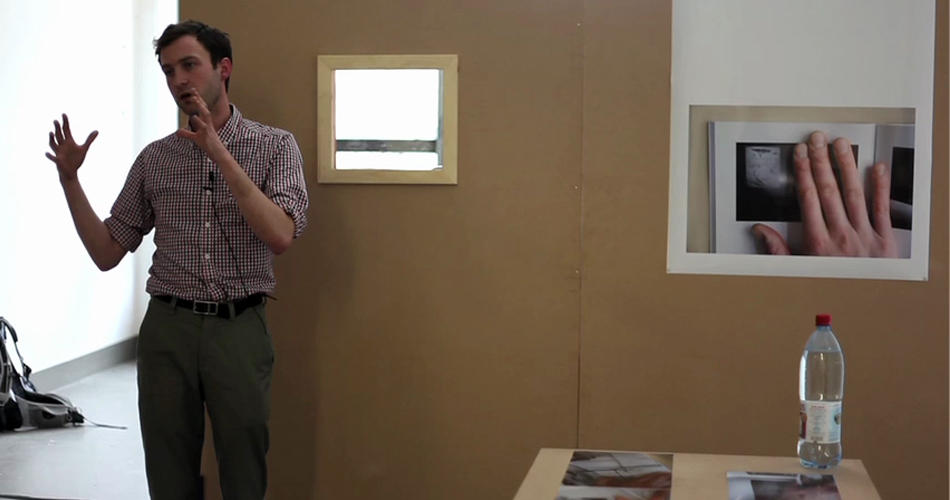
Nineteen Sixities (2011)
All Whirlwind Heat and Flash (Undertone)
Initially appearing to be talking about the video playing alongside him, in All Whirlwind Heat and Flash it gradually becomes clear that Bailey is performing with an extract of Vito Acconci’s video Undertone (1972). Widely circulated on the internet, Acconci’s work details a masturbation fantasy, here faded out so that Bailey can deliver an alternative narrative via a monologue, redolent with the clichés of a cinematic love story and replete with car chases and betrayal. Becoming a vicarious counterpart to Acconci's narcissism, Bailey lives a fantasy through the structure of Acconci’s video rather than through the vivid sexual act he describes, actualizing the complex relationship between reader and subject.
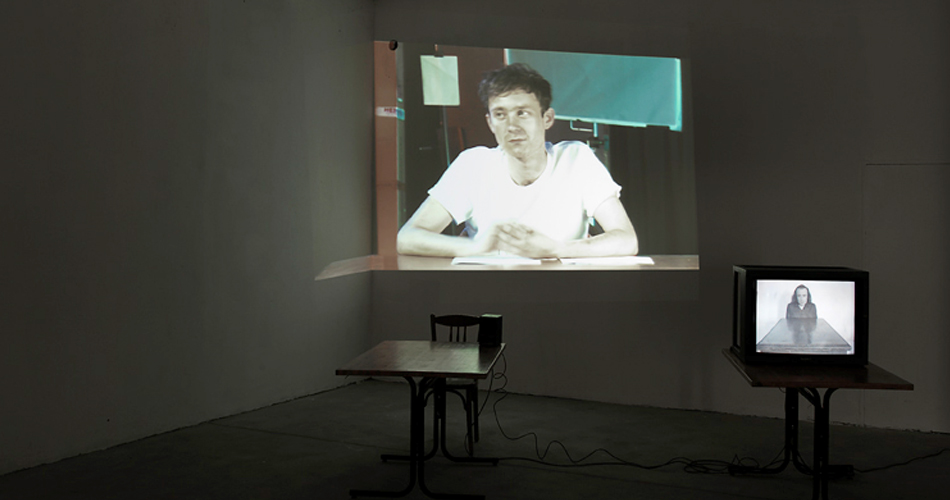
Whirlwind Heat and Flash (Undertone) (2011)
'Talker Catalogue' has been made public at The Chisenhale Gallery, London; Van Horbourg, Basel; CAGE, New York and in group exhibitions at: Arnolfini, Bristol; Establissement d’en Face, Brussels; Stedelijk Museum, Amsterdam; DEK 22, Rotterdam. It was presented as performance paper at the conference Inner Movement: the motor dimension of imagination, University College Ghent and developed into a text to be published in Not a Day Without a Line: Understanding Artists’ Writing, Academia Press, Ghent.
Current Work
Giles Bailey is currently developing the project I Bought a Little City from research conducted while artist in residence with Fieldwork: Marfa in Marfa, Texas and a work of speculative fiction set in Kings Cross titled The Last Day of the Railway Lands.
Further Information
More information about Bailey’s work can be found here: http://1200m.org/giles/
The ‘Talker Catalogue’ project was presented as a performance paper at the conference Inner Movement: the motor dimension of imagination, University College Ghent, Belgium. 1 – 3rd December, 2011. This has been developed into a text to be published with performance transcripts in Not a Day Without a Line: Understanding Artists’ Writing by Academia Press in Ghent, Belgium: http://www.kask.be/index.php?/agenda/artikel/conferentie_inner_movement_the_motor_dimension_of_imagination/
Bailey talks about ‘Talker Catalogue’ here: http://www.arnolfini.org.uk/blog/giles-bailey-interview
